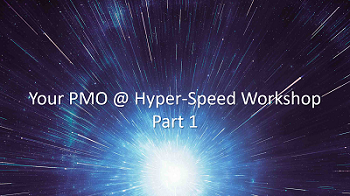![Shift from Annual to Continuous Planning to Enable Agility [Webinar]](https://blog.planview.com/wp-content/uploads/2018/08/Shift-from-Annual-to-Continuous-Planning-to-Enable-Agility-Webinar-750x400.jpg)
See if this sounds familiar: your organization’s strategic plan is constructed at the executive level, broken down into an annual plan that is led by finance, then operationalized by the PMO and other groups in the organization. Yet, as soon as you begin to figure out exactly how the plan is to be executed, change happens. I could say to always “expect the unexpected,” but change is inevitable—it’s expected. So, how can you navigate changes such as new competitors or new technology without completely derailing your annual plan? The answer is continuous planning.
50% of plans organizations carry out are new to what they originally started with.
To adopt continuous planning, you must have a robust portfolio management process—you want to ensure you’re staying focused on the right things. You must have the ability to take any changes, adjust your annual plan to encompass them, then feed them back into your overall planning process, and this process should be seamless.
The fact of the matter is annual planning will always be around, and chances are finance will always remain in charge. However, everyone in the organization is under pressure to deliver products to market more often and faster—finance will want you thinking about next year while you’re still trying to figure out this one. The good news is, if your organization has engaged in annual planning in the past, you can use those already formed processes to shift into continuous planning.
Annual planning is your starting point.
As I mentioned, annual planning will always be around, and is, most likely, something your organization is familiar with. It will provide you with a starting point to shift into continuous planning. However, if your organization missed its window with annual planning, don’t worry. You can instead start with your demand management processes.
- Identify the people involved (both those who are responsible for collecting information and those who are responsible for consuming the data). This group will look different for every organization, but understanding who is involved is key to successful planning.
- Understand your organization’s process. This means looking at how long your planning processes take, how painful they are, etc. Only then will you be able to make the most effective changes.
- Analyze and understand the data. Focus on collecting the data that matters most rather than wasting time on investments that will never get approved. By doing so, you’ll wind up reducing the time it takes to collect and consolidate data, resulting in information that is better suited to drive decisions.
- Define your demand management process. Think about those 50% of projects you’ll have to collect that aren’t a part of the annual plan and understand what exactly is being delivered from a strategic perspective.
- Create a repeatable forecasting process. Having a regular cadence that allows you to measure value against new demand is incredibly valuable, as it isn’t disruptive when measured against the annual plan and allows you to forecast on a regular basis.
Seven steps to shift into high gear from annual to continuous planning.
Now that you understand how to get started by either looking at your current annual planning or demand management processes, let’s look at the specific steps to shift into continuous planning:
- Leverage your organization’s forecasting process;
- Measure it against the annual plan;
- Be able to evaluate new work against in-flight work; and
- Create scenarios and understand trade-offs.
To discover the remaining three steps to shift into effective continuous planning, I invite you to watch the full webinar. All seven steps together will equip you with the information needed to get started today.
You’ve followed the steps, now it’s time to reap the benefits.
Ah, here’s the fun part. What exactly do you stand to gain from following the above steps and tips? Well, for one, you will receive the gift of time, as becoming more agile will increase your organization’s productivity. This agility is your second benefit, as it will reduce the cycle time to forecast and analyze the impacts of decisions from days/weeks to hours. Finally, you will be better able to realize strategy by preventing the loss of strategy and innovation to lower priority investments and improving your ability to measure and monitor key initiatives.
To learn more, watch the full webcast, “Continuous Planning: Shift into Higher Gear @ Hyper-speed,” and be sure to check out the other parts of this series, listed below:
- Part 2: Fuel Decisions with Data by Making the PMO a Strategic Partner [Webinar]
- Part 3: Project Management Software to Boost Your PMO into Hyper-speed [Webinar]
- Part 4: 4 Steps to Effectively Execute on Strategy [Webinar]
- Part 5: 3 Steps to Dominate Digital Disruption
Ready to get started on your journey to continuous planning? Register for a demo of Planview Portfolios today! It will give you the ability to create scenarios that drive powerful conversations, ultimately allowing you to re-rank priorities and make better trade-off decisions from both a funding and capacity perspective.


![Fuel Decisions with Data by Making the PMO a Strategic Partner [Webinar]](https://blog.planview.com/wp-content/uploads/2018/09/Fuel-Decisions-with-Data-by-Making-the-PMO-a-Strategic-Partner.jpg)



